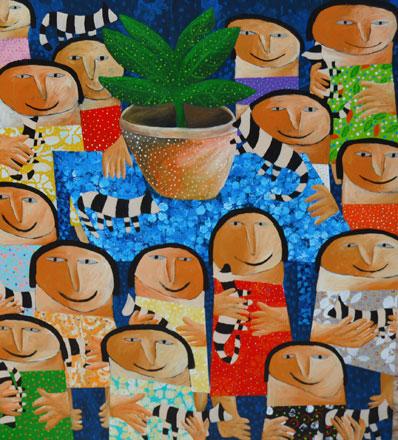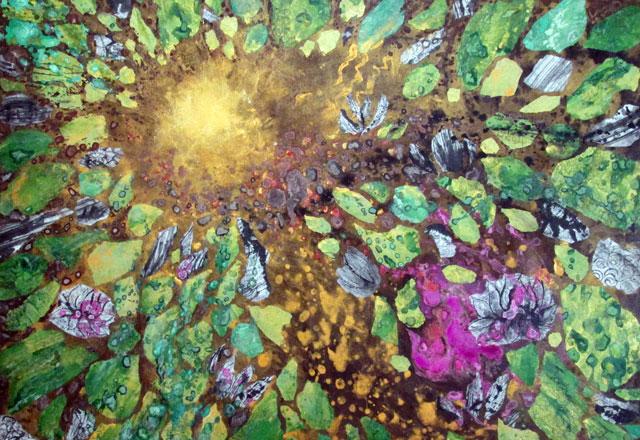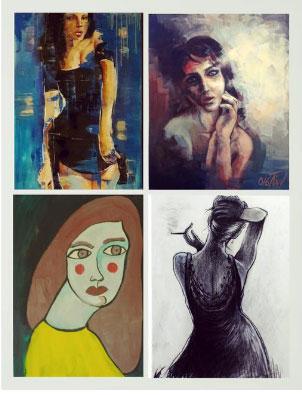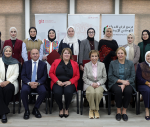You are here
Walking a fine line
By Rand Dalgamouni - Dec 15,2015 - Last updated at Dec 15,2015

Works by Ibrahim Jawabreh on display at Wadi Finan Art Gallery until December 31 (Photo courtesy of Wadi Finan Art Gallery)
AMMAN — In his exhibition, “Another Place”, Palestinian artist Ibrahim Jawabreh deftly walks a fine line between innocence and ominousness.
With the recurring, seemingly childlike drawings of little happy children, his acrylic paintings on canvas are an authentic attempt to recapture lost innocence and simplicity.
Although they may appear to the untrained eye as crude, over-simplistic pieces, each artwork speaks of the painstaking details put into it — from the layered backgrounds, the subtle differences between each “character” and their simple clothes, to the symbolism of the recurrent motifs of pets and saplings, which speak of home and family.
Images of these smiling figures crowd Jawabreh’s works — sometimes overwhelmingly — as they hold their saplings and munch on their watermelon slices.
Their smiles are almost too good to be true, but the bright colours surrounding them and the familial atmosphere they exude dispel such impressions at first.
However, the artist breaks the “happy tone” with several pieces that veer towards the ominous.
In one piece, he replaces the bright colours with a negative polaroid-like effect that — despite the smiling faces — imparts a sense of foreboding from the child-like figures.
Another piece completely obscures the smiling, friendly faces with threads of black paint, in perhaps an expression of the loss of innocence.
Bits and pieces of the bright colours can just barely be discerned beneath the black web, mirroring the difficulty of retrieving childhood memories after the pains of adulthood.
“I’m the clown,” the artist writes. “I paint little children. Colour their faces with my salty tears. And when I’m done, I feel sad for the kids I’ve killed looking in the mirror.”
Viewers find themselves questioning the smiles and bright colours in the other paintings before them. Could they be nothing but a façade? Are they attempts to hark back to better times to escape a bleak reality?
“The wound was soft when I created them,” the artist writes in Arabic, adding that “the severity of pain” made him “forget [his] head at their feet” and die.
It is up to the viewer to take these smiles at face value, or question them and probe the paintings for answers.
Jawabreh’s heritage subtly seeps into his work: in the designs on the dresses worn by the children, in their attachment to the saplings that connect them to their land and in the sense of longing for home and family.
But the art speaks for itself rather than taking the questions of displacement and occupation head-on.
By committing to a consistent style that deceives with its simplicity and simultaneously prompts deep questions, the artist catches one off guard and captures the innocent, yet paradoxically deep curiosity of children.
The artworks are on display at Wadi Finan Art Gallery until December 31.
Related Articles
Artists from Jordan and Japan ask piercing, contemplative questions while celebrating cultural exchange at Dar Al Anda Art Gallery’s “East to East” exhibition.
AMMAN — At Darat Funun, a powerful display titled “Under Fire” presents the work of four Gaza-based artists: Basil Maqousi, Majed Shal
AMMAN — The Zara Gallery on Wednesday inaugurated a group exhibition by Jordanian female artists, under the title “Delicate Lines of Strengt



















